Grow Chives Indoors? Absolutely! Imagine snipping fresh, flavorful chives right from your kitchen windowsill, adding a burst of oniony goodness to your meals year-round. No more sad, wilted herbs from the grocery store – just vibrant, homegrown chives at your fingertips. For centuries, chives have been a staple in gardens and kitchens worldwide, prized for their delicate flavor and ease of cultivation. From ancient Roman gardens to modern-day culinary creations, chives have consistently added a touch of freshness and zest.
But let’s be honest, not everyone has a sprawling outdoor garden. Apartment living, busy schedules, or unpredictable weather can make traditional gardening a challenge. That’s where the magic of indoor gardening comes in! I’m here to show you how incredibly simple it is to grow chives indoors, even if you have a self-proclaimed “black thumb.” This DIY guide will walk you through every step, from choosing the right container to harvesting your first flavorful snippings. Get ready to transform your kitchen into a mini herb garden and elevate your cooking with the freshest chives imaginable!
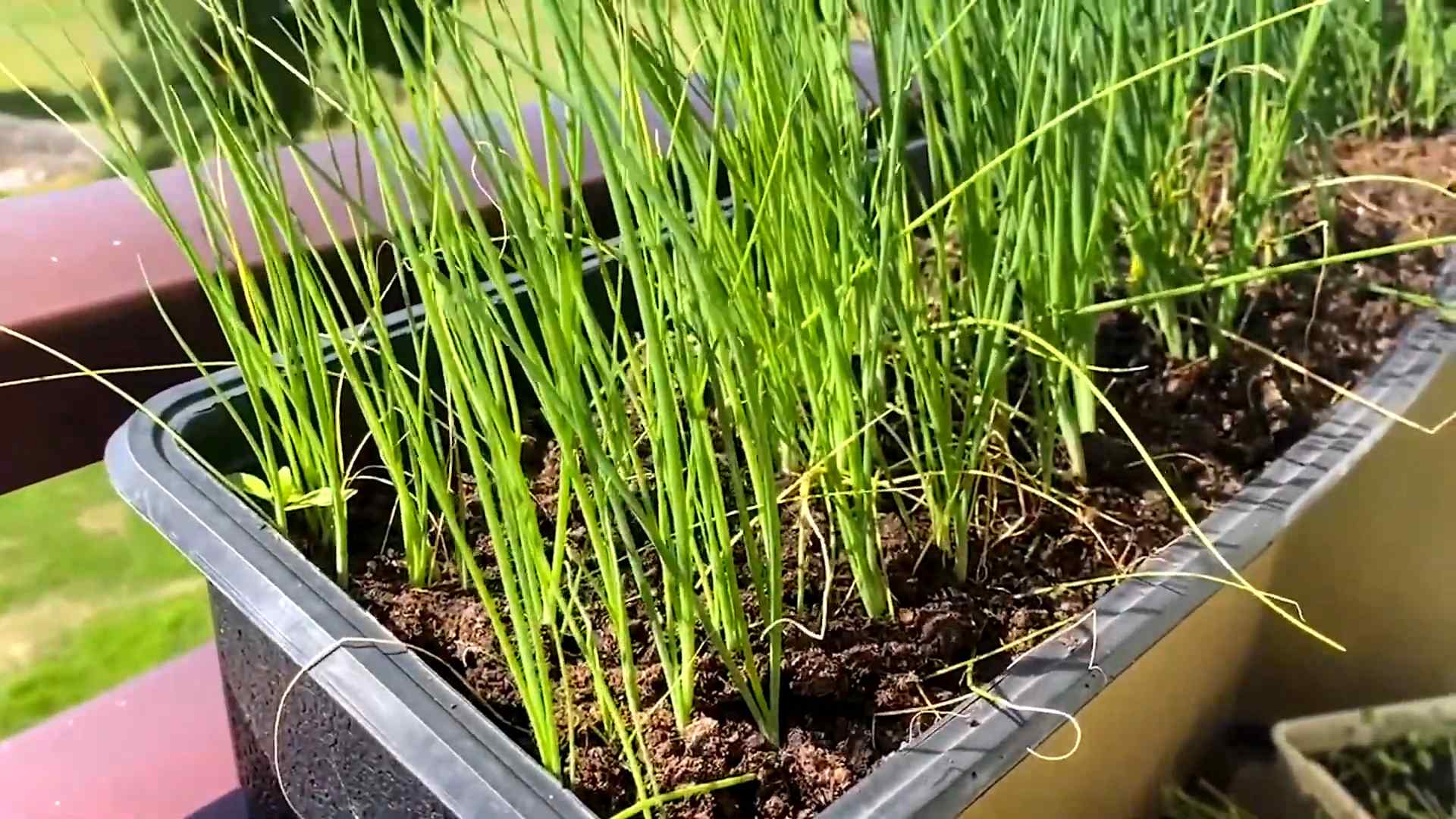
Growing Chives Indoors: A Beginner’s Guide
Hey there, fellow plant enthusiasts! Ever dreamt of snipping fresh chives right from your kitchen windowsill? Well, dream no more! Growing chives indoors is surprisingly easy, rewarding, and adds a delightful touch of green to your home. Plus, having fresh chives on hand elevates any dish – from scrambled eggs to baked potatoes. Let me walk you through the process, step-by-step, so you can enjoy your own homegrown chives in no time.
What You’ll Need
Before we dive in, let’s gather our supplies. Here’s a checklist of everything you’ll need to successfully grow chives indoors:
* **Chive Seeds or a Chive Plant:** You can start from seeds, which is more economical, or purchase a small chive plant from a garden center for a quicker start. I personally prefer starting from seeds; it’s so satisfying to watch them sprout!
* **A Pot with Drainage Holes:** Choose a pot that’s at least 6 inches in diameter and has drainage holes at the bottom. Good drainage is crucial to prevent root rot.
* **Well-Draining Potting Mix:** Avoid using garden soil, as it can become compacted and doesn’t drain well in containers. Opt for a good quality potting mix specifically formulated for container gardening.
* **A Sunny Location:** Chives need at least 6 hours of sunlight per day. A south-facing windowsill is ideal, but an east- or west-facing window can also work. If you don’t have enough natural light, consider using a grow light.
* **Watering Can or Spray Bottle:** For gentle watering.
* **Optional: Seed Starting Tray and Dome:** If you’re starting from seeds, a seed starting tray and dome can help create a humid environment for germination.
* **Optional: Plant Food:** A balanced liquid fertilizer can help boost growth, but it’s not essential.
Starting from Seeds: A Step-by-Step Guide
If you’re opting to start from seeds, here’s how to do it:
1. **Prepare the Seed Starting Tray (Optional):** If you’re using a seed starting tray, fill each cell with moistened potting mix. Gently press the soil down to remove any air pockets.
2. **Sow the Seeds:** Sprinkle 2-3 chive seeds into each cell (or directly into your pot if you’re skipping the seed starting tray). Cover the seeds with a thin layer of potting mix (about 1/4 inch).
3. **Water Gently:** Use a spray bottle to gently mist the soil. You want to moisten the soil without disturbing the seeds.
4. **Cover with a Dome (Optional):** If you’re using a seed starting tray, cover it with a dome to create a humid environment. This will help the seeds germinate faster.
5. **Place in a Warm Location:** Place the seed starting tray (or your pot) in a warm location, ideally around 70-75°F (21-24°C).
6. **Keep the Soil Moist:** Check the soil daily and mist it with water as needed to keep it consistently moist. Don’t let it dry out!
7. **Wait for Germination:** Chive seeds typically germinate in 7-14 days. Once the seedlings emerge, remove the dome (if you used one) and move the tray or pot to a sunny location.
8. **Thin the Seedlings (If Necessary):** If multiple seedlings emerge in the same cell, thin them out to leave only the strongest one. This will give the remaining seedling more room to grow.
9. **Transplant (If Necessary):** If you started your seeds in a seed starting tray, transplant the seedlings into your pot once they have a few sets of true leaves (the leaves that look like miniature chives). Gently remove the seedlings from the tray and plant them in your pot, spacing them about 2-3 inches apart.
Planting a Chive Plant: A Quick Start
If you’ve purchased a chive plant from a garden center, the process is even simpler:
1. **Prepare the Pot:** Fill your pot with well-draining potting mix, leaving about an inch of space at the top.
2. **Remove the Plant from its Container:** Gently remove the chive plant from its original container. If the roots are tightly bound, gently loosen them with your fingers.
3. **Plant the Chives:** Place the chive plant in the center of your pot. Make sure the top of the root ball is level with the soil surface.
4. **Fill in with Potting Mix:** Fill in the remaining space around the plant with potting mix. Gently press the soil down to secure the plant.
5. **Water Thoroughly:** Water the plant thoroughly until water drains out of the drainage holes.
Caring for Your Indoor Chives
Now that your chives are planted, here’s how to keep them happy and healthy:
1. **Watering:** Water your chives regularly, allowing the top inch of soil to dry out between waterings. Avoid overwatering, as this can lead to root rot. I usually check the soil moisture every few days and water when it feels dry to the touch.
2. **Sunlight:** Chives need at least 6 hours of sunlight per day. If you don’t have enough natural light, supplement with a grow light.
3. **Fertilizing (Optional):** If you want to boost growth, you can fertilize your chives every 2-3 weeks with a balanced liquid fertilizer. Follow the instructions on the fertilizer label. I personally don’t fertilize mine very often, but they still thrive!
4. **Pruning:** Regular pruning is essential for keeping your chives healthy and productive. Snip off the tips of the leaves regularly to encourage new growth. This also prevents the chives from flowering, which can make the leaves taste bitter.
5. **Pest Control:** Chives are generally pest-resistant, but they can occasionally be affected by aphids or spider mites. If you notice any pests, try spraying them off with a strong stream of water. You can also use insecticidal soap if necessary.
6. **Repotting (If Necessary):** If your chives become root-bound (the roots are circling around the inside of the pot), you may need to repot them into a larger container. This is usually necessary every 1-2 years.
Harvesting Your Chives
The best part about growing chives indoors is, of course, harvesting them!
1. **When to Harvest:** You can start harvesting your chives once they are about 6 inches tall.
2. **How to Harvest:** Use scissors or kitchen shears to snip off the leaves near the base of the plant. Avoid cutting off more than one-third of the plant at a time, as this can weaken it.
3. **Enjoy!** Use your freshly harvested chives to add flavor to your favorite dishes. They’re delicious in salads, soups, omelets, and so much more!
Troubleshooting
Even with the best care, you might encounter a few challenges along the way. Here are some common problems and how to fix them:
* **Yellowing Leaves:** This can be caused by overwatering, underwatering, or lack of nutrients. Adjust your watering schedule and consider fertilizing your chives.
* **Leggy Growth:** This is usually caused by insufficient sunlight. Move your chives to a sunnier location or supplement with a grow light.
* **Slow Growth:** This can be caused by a variety of factors, including poor soil, lack of nutrients, or insufficient sunlight. Make sure your chives are planted in well-draining potting mix, fertilize them regularly, and provide them with plenty of sunlight.
* **Pests:** As mentioned earlier, aphids and spider mites can sometimes be a problem. Spray them off with water or use insecticidal soap.
Extending the Harvest
To enjoy fresh chives year-round, consider these tips:
* **Succession Planting:** Sow new seeds every few weeks to ensure a continuous supply of chives.
* **Freezing Chives:** If you have a surplus of chives, you can freeze them for later use. Simply chop the chives and place them in a freezer bag. They’ll keep for several months.
* **Drying Chives:** You can also dry chives, although they will lose some of their flavor. Spread the chopped chives on a baking sheet and dry them in a low oven (around 170°F or 77°C) until they are brittle.
Growing chives indoors is a simple and rewarding project that anyone can do. With a little bit of care and attention, you’ll be enjoying fresh, flavorful chives all year long. Happy gardening!
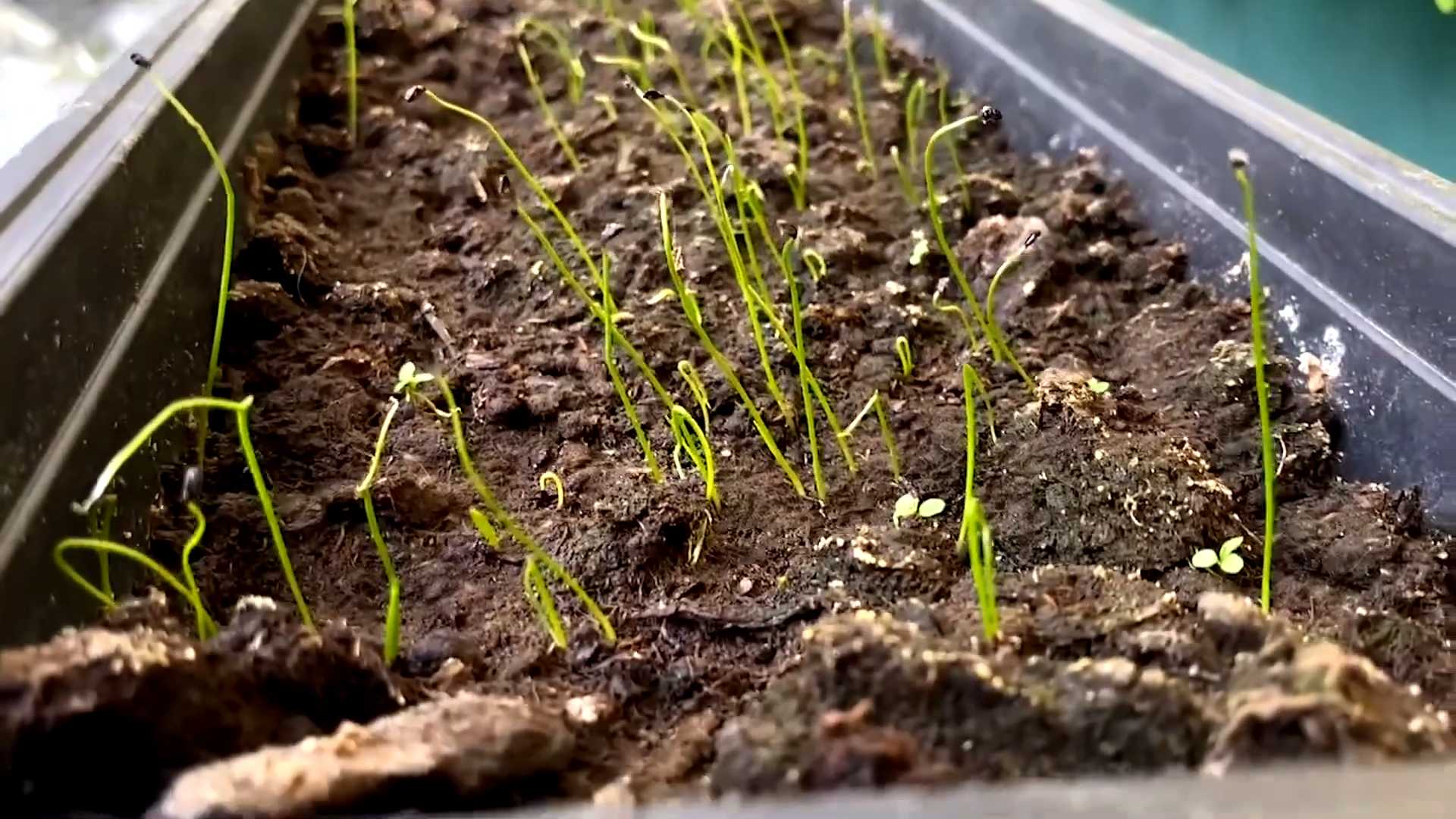
Conclusion
So, there you have it! Growing chives indoors is not only achievable, but it’s also incredibly rewarding. Imagine having fresh, flavorful chives at your fingertips, ready to elevate your culinary creations any time of year. No more sad, wilted herbs from the grocery store, and no more last-minute dashes to the garden in the pouring rain. This simple DIY project brings the garden to you, offering a constant supply of this versatile herb.
But why is this a must-try? Beyond the convenience, growing your own chives indoors offers unparalleled freshness and flavor. Commercially grown chives often travel long distances and sit on shelves, losing their potency and vibrancy. When you grow your own, you harvest them at their peak, ensuring the most intense and delicious flavor possible. Plus, it’s incredibly satisfying to nurture something from seed (or transplant) to table.
And the best part? It’s adaptable to your needs and preferences. Want a spicier kick? Try growing garlic chives alongside your regular variety. Short on space? A small pot on a sunny windowsill will do the trick. Feeling adventurous? Experiment with different potting mixes or even try hydroponic chive cultivation. The possibilities are endless!
This method of growing chives indoors is a game-changer for any home cook or gardening enthusiast. It’s easy, affordable, and yields delicious results. It’s also a fantastic way to introduce children to the joys of gardening and the importance of fresh, healthy food.
We encourage you to give this DIY trick a try. Start small, experiment with different techniques, and find what works best for you. And most importantly, don’t forget to share your experience! We’d love to hear your tips, tricks, and successes in the comments below. Let’s build a community of indoor chive growers and inspire others to bring the garden indoors. Share your photos, your recipes, and your stories – let’s celebrate the joy of fresh, homegrown chives together!
Frequently Asked Questions (FAQs)
Q: What kind of chives should I grow indoors?
A: Common chives (Allium schoenoprasum) are the most popular and easiest to grow indoors. They have a mild, onion-like flavor. Garlic chives (Allium tuberosum) are another great option, offering a slightly stronger, garlic-infused taste. Both varieties thrive indoors with proper care. Consider starting with common chives if you’re a beginner, as they are generally more forgiving. You can find seeds or starter plants at most garden centers or online retailers. When selecting your chives, ensure the plants look healthy and vibrant, with no signs of disease or pests.
Q: What kind of pot and soil should I use?
A: Choose a pot that is at least 6 inches in diameter and has drainage holes. Good drainage is crucial to prevent root rot. Terracotta pots are a good choice as they allow the soil to breathe. As for soil, use a well-draining potting mix specifically formulated for herbs or vegetables. Avoid using garden soil, as it can be too heavy and compact for container gardening. You can also amend your potting mix with perlite or vermiculite to improve drainage and aeration. A slightly acidic to neutral pH (around 6.0-7.0) is ideal for chives.
Q: How much sunlight do indoor chives need?
A: Chives need at least 6 hours of sunlight per day to thrive. A south-facing window is ideal, but an east- or west-facing window can also work. If you don’t have enough natural light, you can supplement with a grow light. Place the grow light a few inches above the plants and keep it on for 12-14 hours per day. Rotate the pot regularly to ensure all sides of the plant receive adequate light. Signs of insufficient light include leggy growth (long, thin stems) and pale leaves.
Q: How often should I water my indoor chives?
A: Water your chives when the top inch of soil feels dry to the touch. Avoid overwatering, as this can lead to root rot. Water thoroughly until water drains out of the drainage holes. Empty the saucer beneath the pot to prevent the plant from sitting in water. During the winter months, when growth slows down, you may need to water less frequently. Check the soil moisture regularly and adjust your watering schedule accordingly.
Q: How often should I fertilize my indoor chives?
A: Fertilize your chives every 2-4 weeks during the growing season (spring and summer) with a balanced liquid fertilizer diluted to half strength. Avoid over-fertilizing, as this can burn the roots. Look for a fertilizer that is specifically formulated for herbs or vegetables. During the winter months, when growth slows down, you can reduce or eliminate fertilization.
Q: How do I harvest chives?
A: You can start harvesting chives when they are about 6 inches tall. Use scissors or kitchen shears to snip the leaves close to the base of the plant. Avoid cutting off more than one-third of the plant at a time, as this can stress the plant. Regular harvesting encourages new growth and keeps the plant productive. Freshly cut chives are best used immediately, but they can also be stored in the refrigerator for a few days.
Q: Can I grow chives from seed indoors?
A: Yes, you can grow chives from seed indoors. Start seeds 6-8 weeks before the last expected frost. Sow seeds ¼ inch deep in a seed-starting mix. Keep the soil moist and warm (around 70-75°F). Seedlings should emerge in 7-14 days. Once the seedlings have a few sets of true leaves, transplant them into individual pots.
Q: Are there any pests or diseases that affect indoor chives?
A: Indoor chives are generally pest-resistant, but they can occasionally be affected by aphids, spider mites, or fungus gnats. Inspect your plants regularly for signs of pests or diseases. If you find pests, you can try washing them off with a strong stream of water or using insecticidal soap. To prevent fungal diseases, ensure good air circulation and avoid overwatering.
Q: Can I move my indoor chives outdoors in the summer?
A: Yes, you can move your indoor chives outdoors in the summer, but be sure to acclimate them gradually to avoid shocking the plants. Start by placing them in a shady spot for a few hours each day, gradually increasing the amount of sunlight they receive. Bring them back indoors before the first frost.
Q: My chives are flowering. Should I cut off the flowers?
A: Chive flowers are edible and have a mild onion flavor. However, flowering can sometimes reduce leaf production. If you want to encourage more leaf growth, you can cut off the flower buds before they open. You can also let some of the flowers bloom to attract pollinators.
Q: How do I propagate chives?
A: Chives can be easily propagated by division. In the spring or fall, carefully dig up the plant and divide the clump into smaller sections. Each section should have its own roots and shoots. Replant the divisions in individual pots.
Q: What are some creative ways to use my homegrown chives?
A: The possibilities are endless! Sprinkle them on eggs, salads, soups, baked potatoes, or grilled meats. Use them to flavor dips, sauces, and dressings. Add them to omelets, quiches, or frittatas. Mix them into cream cheese or sour cream for a delicious spread. Garnish your favorite dishes with a sprinkle of freshly chopped chives for a burst of flavor and color. You can even use them to make chive butter or chive oil.


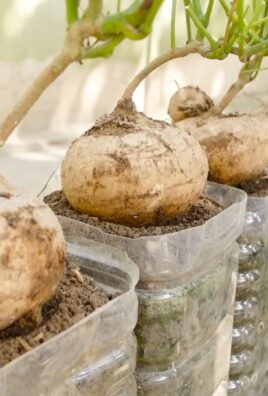
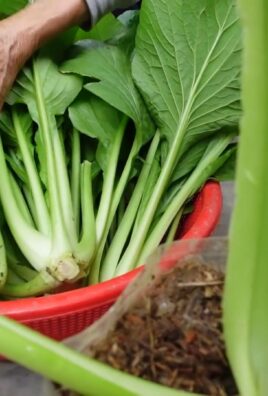
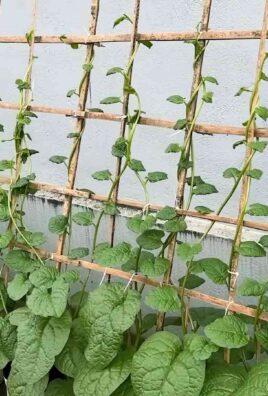
Leave a Comment